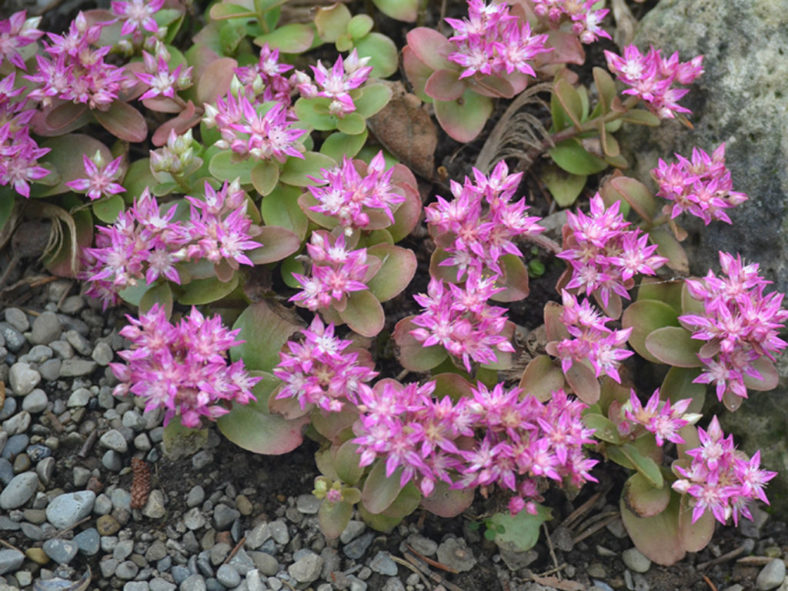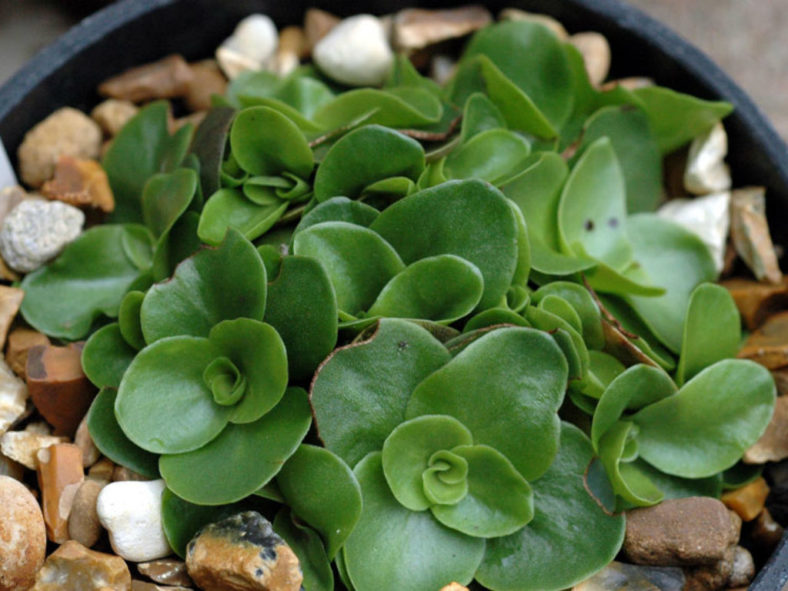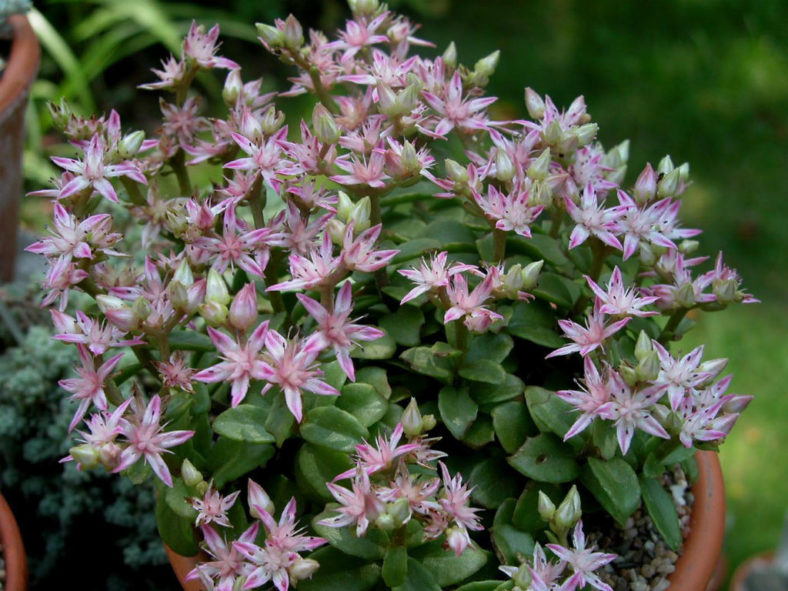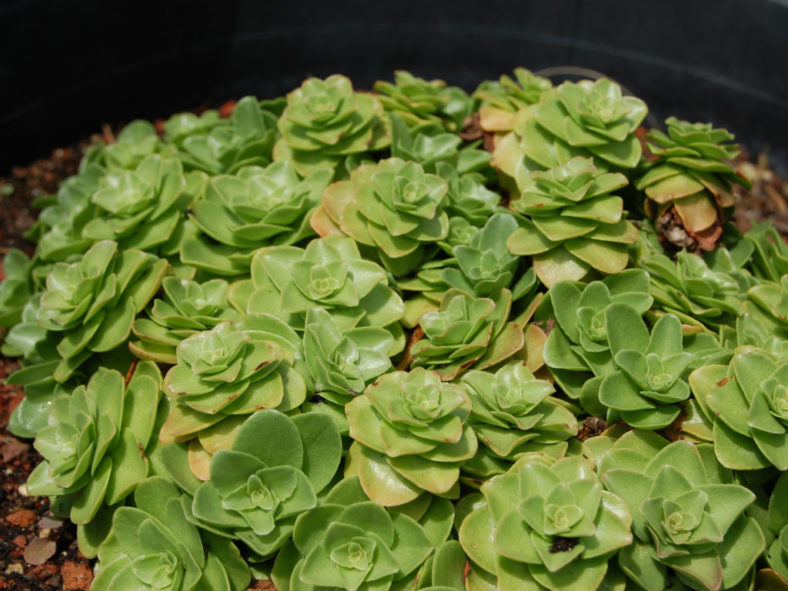Scientific Name
Phedimus obtusifolius (C.A.Mey.) 't Hart
Synonym(s)
Asterosedum obtusifolium, Sedum obtusifolium
Scientific Classification
Family: Crassulaceae
Subfamily: Sempervivoideae
Tribe: Umbiliceae
Genus: Phedimus
Etymology
The specific epithet "obtusifolius (ob-too-sih-FOH-lee-us)" means "blunt-leafed" and refers to the rounded tips of the leaves.
Origin
Phedimus obtusifolius is native to Armenia, Azerbaijan, Iran, and Turkey. It occurs in the mountainous areas above 6600 feet (2000 m).
Description
Phedimus obtusifolius, also known as Sedum obtusifolium, is a succulent plant with an interesting and unusual life cycle. It differs from all other species in that it has underground tuber-like shoots covered with short, white, overlapping leaves. They remain inactive during the summer months and produce small, flat, almost stemless winter rosettes of opposite densely packed leaves in late fall. The leaves are green and turn bronze-red in full sun. They are rounded to oblong with slightly serrated margins, measuring up to 1.6 inches (4 cm) long and up to 0.6 inches (1.5 cm) wide. The stems can grow up to 10 inches (25 cm) tall in spring, forming the summer flowering shoots with a terminal cluster of star-shaped flowers produced in profusion.
The flowers are usually rosy pink with a white base but also white, pink to reddish-purple. After flowering, the stems die back to complete the annual growth cycle.

How to Grow and Care for Phedimus obtusifolius
Light: These light-loving plants will tolerate light or partial shade but prefer full sun and grow best in warmer environments.
Soil: Phedimus thrive in any well-drained soil. Good drainage is critical for preventing root rot or fungal diseases.
Hardiness: Phedimus obtusifolius can withstand temperatures as low as -20 to 30 °F (-28.9 to -1.1 °C), USDA hardiness zones 5a to 9b.
Watering: The best way to water your Phedimus is to use the "soak and dry" method. Get the soil completely wet, and then wait until the soil is dry before watering again.
Fertilizing: Feed with low-balanced fertilizer to keep your plants happy and healthy. Use a diluted dose of half the strength recommended on the package.
Repotting: Repot your plants when they outgrow their current pot by moving them to a larger container to hold the plant better.
Propagation: Phedimus can be grown from seeds, division, or stem cuttings.
Learn more at How to Grow and Care for Phedimus.
Toxicity of Phedimus obtusifolius
Phedimus plants can be mildly toxic to humans and animals.
Links
- Back to genus Phedimus
- Succupedia: Browse succulents by Scientific Name, Common Name, Genus, Family, USDA Hardiness Zone, Origin, or cacti by Genus
Photo Gallery
Click on a photo to see a larger version.


